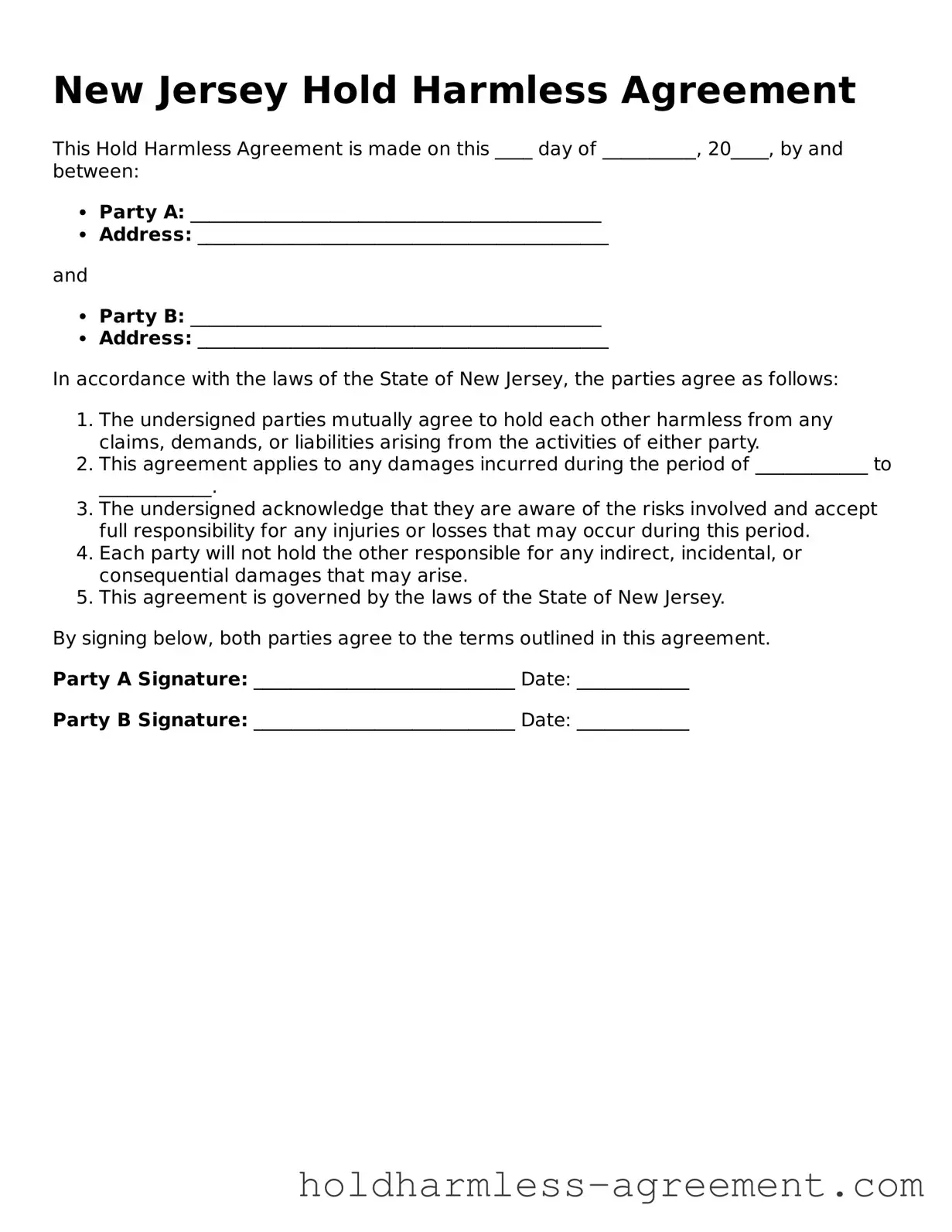What is a Hold Harmless Agreement in New Jersey?
A Hold Harmless Agreement is a legal document that protects one party from liability or claims made by another party. In New Jersey, this type of agreement is often used in various situations, such as contracts for services, rental agreements, or events. By signing this document, one party agrees to assume responsibility for any risks or damages that may arise, thereby shielding the other party from potential legal action.
Who typically uses a Hold Harmless Agreement?
Hold Harmless Agreements are commonly utilized by a variety of individuals and organizations, including:
-
Landlords and tenants
-
Event organizers and participants
-
Contractors and clients
-
Businesses and service providers
These agreements serve to clarify the responsibilities and liabilities of each party involved in a transaction or activity.
What are the key components of a Hold Harmless Agreement?
A well-drafted Hold Harmless Agreement generally includes the following components:
-
Parties Involved:
Clearly identify the parties entering into the agreement.
-
Scope of Liability:
Specify the types of claims or damages covered by the agreement.
-
Indemnification Clause:
Outline the obligations of one party to compensate the other for losses incurred.
-
Duration:
Indicate the time frame during which the agreement is valid.
-
Signatures:
Ensure that all parties sign and date the document to make it legally binding.
Is a Hold Harmless Agreement legally enforceable in New Jersey?
Yes, a Hold Harmless Agreement can be legally enforceable in New Jersey, provided it is drafted correctly and meets the necessary legal requirements. Courts generally uphold these agreements, especially when they are clear and specific about the liabilities being waived. However, certain limitations may apply, particularly in cases of gross negligence or willful misconduct.
Can a Hold Harmless Agreement be modified after it has been signed?
Yes, a Hold Harmless Agreement can be modified after it has been signed, but both parties must agree to the changes. It is advisable to document any modifications in writing and have both parties sign the revised agreement to ensure clarity and enforceability.
What happens if one party does not honor the Hold Harmless Agreement?
If one party fails to honor the terms of the Hold Harmless Agreement, the other party may have grounds to pursue legal action. This could involve seeking damages or enforcing the terms of the agreement in court. The specific remedies available will depend on the circumstances and the language of the agreement itself.
Are there any risks associated with signing a Hold Harmless Agreement?
Yes, there are potential risks involved in signing a Hold Harmless Agreement. By agreeing to indemnify another party, one may assume significant financial responsibility for claims or damages that arise. It is crucial to fully understand the implications of the agreement and consult with a legal professional if there are any uncertainties.
How can I ensure my Hold Harmless Agreement is effective?
To ensure that a Hold Harmless Agreement is effective, consider the following tips:
-
Use clear and concise language.
-
Be specific about the liabilities being waived.
-
Consult with a legal expert to review the document.
-
Ensure all parties understand the terms before signing.
Taking these steps can help minimize misunderstandings and enhance the enforceability of the agreement.
Hold Harmless Agreement forms can be obtained from various sources, including:
-
Legal websites that provide templates
-
Local legal aid offices
-
Attorneys who specialize in contract law
-
Business associations or trade organizations
When using a template, it is important to customize it to fit your specific situation and ensure compliance with New Jersey laws.
